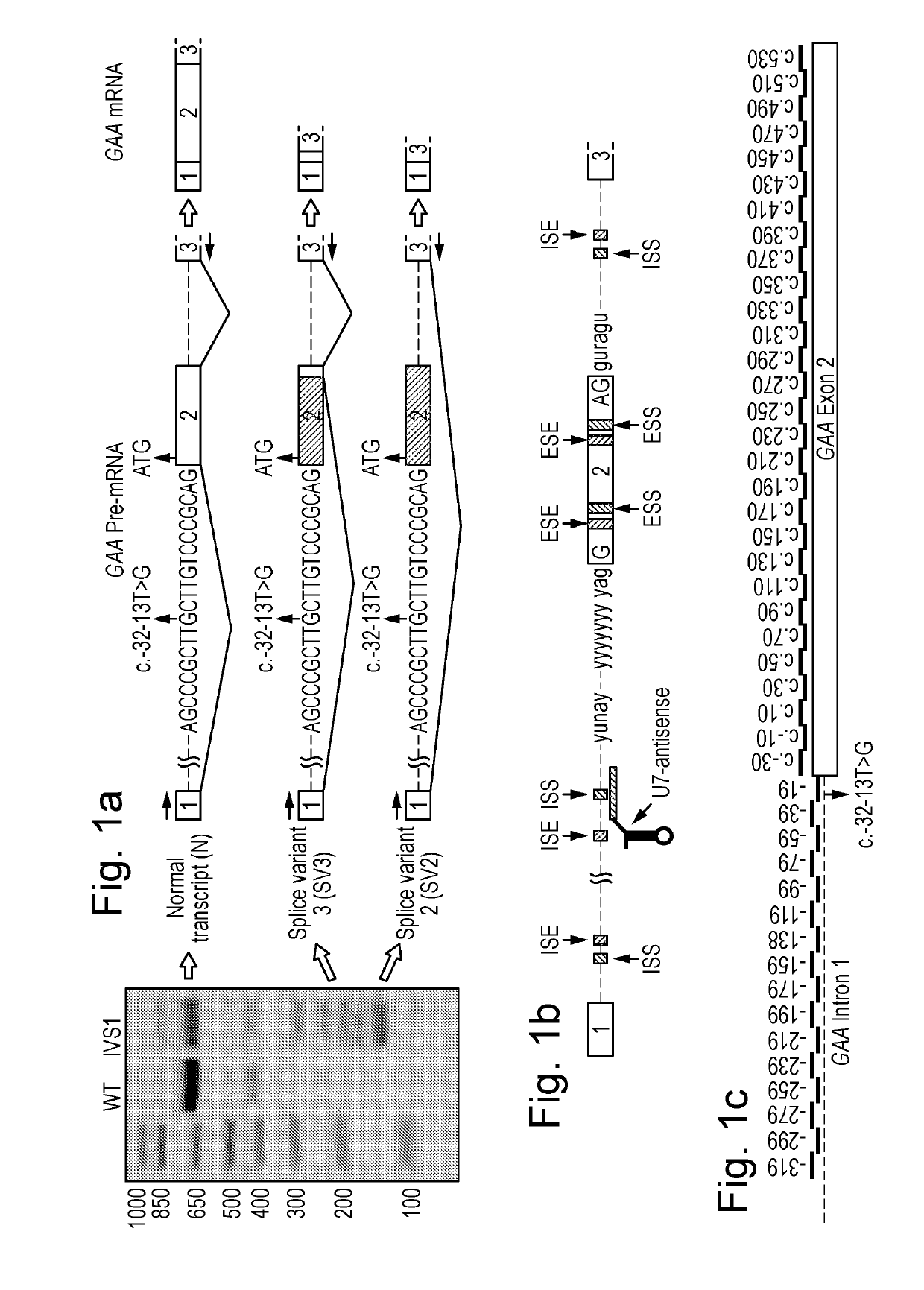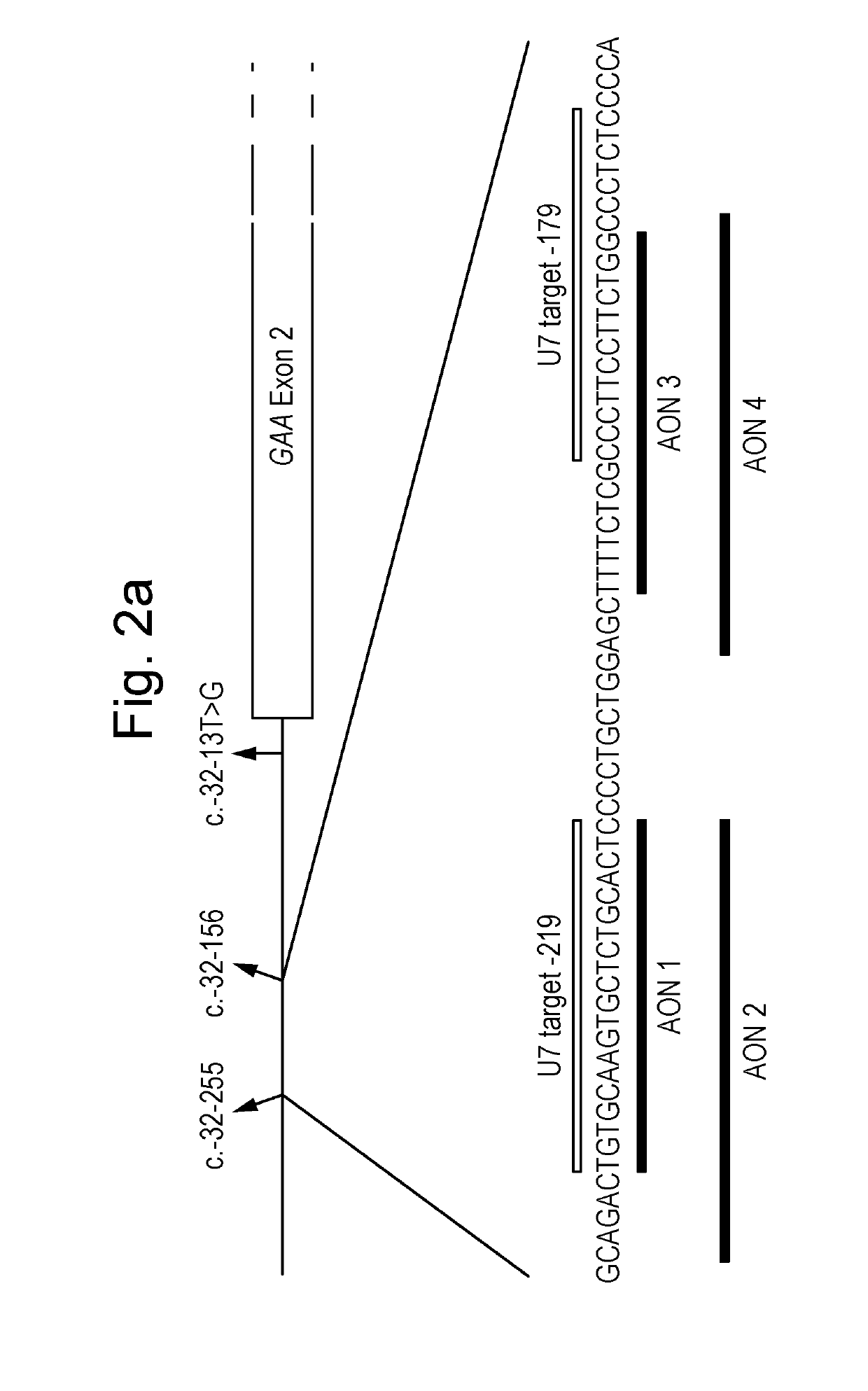Natural Cryptic Exon Removal by Pairs of Antisense Oligonucleotides
a technology of antisense oligonucleotides and cryptic exons, applied in the field of antisense oligonucleotides, to achieve the effect of restoring splicing and gaa enzyme activity
- Summary
- Abstract
- Description
- Claims
- Application Information
AI Technical Summary
Benefits of technology
Problems solved by technology
Method used
Image
Examples
examples
[0270]Materials & Methods
[0271]Generation of Induced Pluripotent Stem Cells
[0272]Dermal fibroblasts from control 1 and two patients (1 and 2) with Pompe disease were obtained via skin biopsy with informed consent. The Institutional Review Board approved the study protocol. All patient and control primary cell lines were negative for HIV, hepatitis B, hepatitis C as tested by quantitative PCR analysis at the diagnostic department of Virology of the Erasmus MC Rotterdam, The Netherlands. Both patient cell lines contain the IVS1 mutation on one allele. The second allele was c.525delT for patient 1, and c.923A>C (his>pro) for patient 2, which both are established pathogenic GAA variants (www.pompecenter.nl). Primary fibroblasts were reprogrammed into iPS cells using a polycistronic lentiviral vector of Oct4, Sox2, Klf4, and c-Myc as described54. iPS control 2 cell line was a gift from Christian Freund and Christine Mummery and has been characterized previously26. iPS cells were cultured...
PUM
| Property | Measurement | Unit |
|---|---|---|
| Fraction | aaaaa | aaaaa |
| Mass | aaaaa | aaaaa |
| Nuclear radiation | aaaaa | aaaaa |
Abstract
Description
Claims
Application Information
 Login to View More
Login to View More - R&D
- Intellectual Property
- Life Sciences
- Materials
- Tech Scout
- Unparalleled Data Quality
- Higher Quality Content
- 60% Fewer Hallucinations
Browse by: Latest US Patents, China's latest patents, Technical Efficacy Thesaurus, Application Domain, Technology Topic, Popular Technical Reports.
© 2025 PatSnap. All rights reserved.Legal|Privacy policy|Modern Slavery Act Transparency Statement|Sitemap|About US| Contact US: help@patsnap.com



